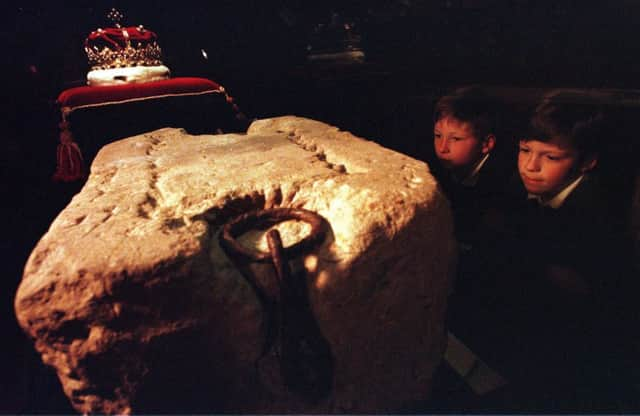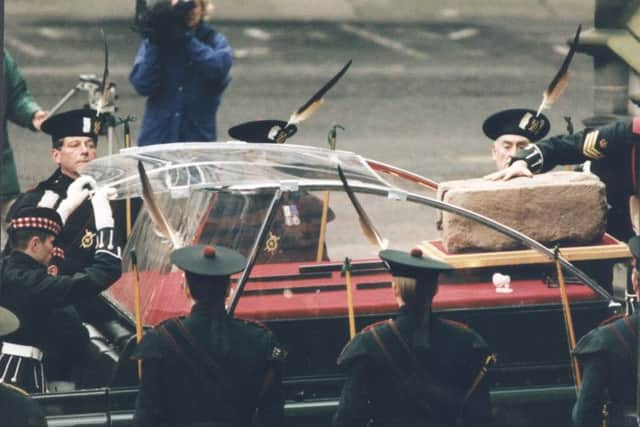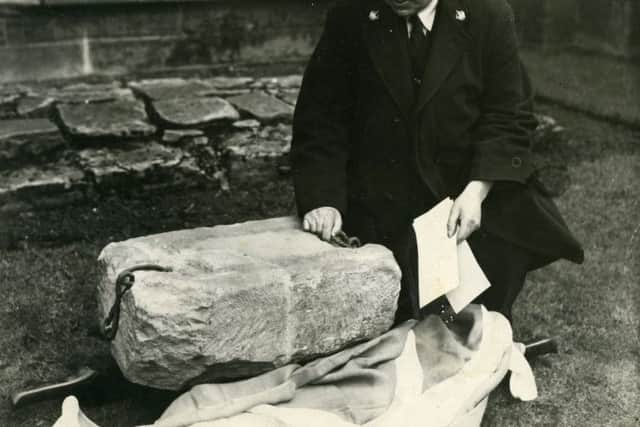Stone of Destiny could be moved from Edinburgh to Perth


Now plans have been revealed to move the Stone of Destiny from Edinburgh Castle to Perth as part of a £20 million cultural development.
Councillors in the Fair City are to vote this week on whether to approach the Commissioners of the Regalia of Scotland and Historic Environment Scotland to request the transfer as part of a bid to become the UK City of Culture in 2021.
Advertisement
Hide AdAdvertisement
Hide AdPerth and Kinross Council will consider ambitious plans to refurbish the city’s art gallery - one of the oldest purpose built museums in the UK - as well as opening a new visual arts centre.


Council leader Ian Miller is calling for the return of the stone to its ancient Perthshire home as part of the project.
“The Stone of Destiny is a major part of Perth’s place at the ancient roots of Scotland’s story.
“I will therefore be asking all councillors to support my motion to formally request consideration by Historic Environment Scotland and the Commissioners of the Regalia for the Stone of Destiny to come to Perth.”


If the transfer is agreed, it would begin another chapter in the stone’s long and often turbulent history.
Its origins are obscure, but the relic was originally housed in the now demolished Scone Abbey until it was stolen as spoils of war by Edward I of England in 1296 as part of a concentrated effort to crush the medieval Scottish kingdom.
The stone - also known as Jacob’s Pillow - had a powerful ceremonial role in the crowning of ancient Scots kings. It was last used in the coronation of Alexander III in July 1249 before it was seized by an invading English army later in the century.
Advertisement
Hide AdAdvertisement
Hide AdAs a final insult, Edward had the stone installed beneath a specially-designed coronation chair for use of all future English monarchs.


The chair, which sits in Westminster Abbey, is still in use following the Act of Union in 1707 and was last used by Elizabeth II at her coronation in 1953.
Several nationalist-supporting students from Glasgow famously removed the stone from its London resting place on Christmas Day 1950 and returned it to Scotland.
Its theft prompted a national scandal and hundreds of police officers were deployed to find it.
The stone was eventually found on the high altar of Arbroath Abbey - draped in a saltire - in April 1951 and was returned to Westminster.


John Major’s Conservative government announced in July 1996 that the stone would be returned to Scotland where it would go on permanent display at Edinburgh Castle.
There are several well-known theories that the stone in the capital is not the original. One suggests the monks of Scone buried the real stone to protect from the English, while others suggest copies were made when the stone was brought back to Scotland in 1950.